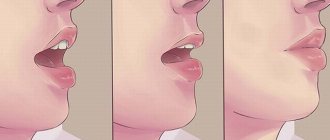about the author
Jose Antonio Garcia Higuera
Born in Madrid in 1947.
Candidate of Sciences in Psychology. 1999 National University of Education (UNED). (Diploma with honors).
Licensed psychologist. 1979 Universitad Complutense de Madrid
Degree in Mathematics. 1969 Universitad Complutense de Madrid
Accredited psychotherapist. FEAP (Spanish Federation of Psychotherapists). ASETECCS (Spanish Association of Social Cognitive Behavioral Therapy).
Introduction
Most people who stutter have no psychological problems other than those associated with their stuttering. Most of the psychological problems that people who stutter have are related to their stuttering. In other words, if people who stutter could speak fluently and smoothly, they would not have any other problems. Van Riper (1973, pp. 211, 213) said, "The neurosis, if present, is usually the result of a traumatic experience of speaking...these stuttering people were unhappy only because they stuttered." This article, which focuses on the psychological problems associated with speech disorders, attempts to illustrate, by describing the treatment chosen in this particular case, some of the mechanisms and processes that may be involved in the development of psychological problems in people who stutter.
Stuttering can cause psychological problems, which in turn can impair speech. Solving psychological problems is not always a direct consequence of improving speech. The use of cognitive behavioral therapy techniques may be a fundamental principle for achieving better health in some cases.
Stuttering leads to the fact that a person gains the experience of losing control over his body in an extremely important situation - during interpersonal communication. Loss of control over one's own body can cause situations similar to those mentioned by Van Riper (1973, p. 330). In this case, the resulting blockage is so intense that external intervention is required to eliminate it. Van Riper compares this human experience with the results obtained in experiments with dogs, which were inevitably punished. These situations have given rise to the phenomenon of learned helplessness (Abramson, 1978), which is believed to play an important role in the onset of some types of depression.
Several years ago (1908), Yerkes and Dodson established a connection between the level of activation and performance indicators. If we are “too under-activated,” that is, in an almost sleepy state, our performance will be very low. As activity increases, our performance also increases to reach its optimal level. This optimal level of performance corresponds to a certain level of activation, which depends directly on the type of task and the individual characteristics of the individual. If the process of increasing activation continued, our performance would quickly deteriorate. A person who stutters, when he tries to speak, must make more efforts to formulate and express his thoughts correctly. Applying such efforts implies an increase in activation, and accordingly, a decline in performance can easily occur. When faced with failure, the subject experiences anxiety, which in turn further increases activation. This creates a feedback loop that sets up more and more blocks and finally leads to a feeling of loss of control over one's body, making stuttering inevitable. In psychology, loss of self-control has traditionally been recognized as a leading cause of depression. In recent years, the inability to control oneself has also been identified as an important culprit in the development of anxiety disorders (Zinbarg and Barlow, 1992).
Depression and anxiety are not the only experiences that can trigger psychological disorders that affect stuttering. Control of speech is of great importance in social relationships. Long-term failures in social relationships generate feelings of frustration, guilt, hostility, and high levels of anger (Van Riper, 1973, p. 264). In addition, improper management of the resulting feelings of guilt and disappointment can disrupt interpersonal relationships, provoking additional social problems that can lead to the formation of many psychological disorders. A person who stutters may have greater difficulty than a person who does not stutter when interacting socially. Avoidance, evasion, and flight from contacts can cause serious problems in social relationships, which give rise to psychological disorders. The effort a person who stutters puts into speaking can sometimes feel overwhelming and overwhelming, and he or she withdraws from social interaction, feeling frustrated, angry, and hostile, which in turn increases existing social problems.
Quite often, when speech problems are resolved, the person’s psychological state simultaneously improves. However, this is not always the case. Sometimes improving the ability to express one's thoughts leads to changes in a person's expectations and contributes to a change in the social environment, which, in turn, can create new psychological problems. For example, in a marital relationship, the ability to express oneself freely can lead to a redistribution of power within the couple, leading to problems that were not previously so obvious. In anxiety and depression, an important role is played by existing ancient patterns in a person's worldview (Beck, 1969), which continue to operate even when they are no longer needed and even in situations where they are harmful. It is necessary to deactivate the influence of such established patterns to solve psychological problems of the individual.
Treatment methods
The most effective treatment methods can be divided into several:
- traditional gymnastics to improve the functioning of the respiratory and speech apparatus;
- medicinal method;
- folk remedies;
- use of special gadgets;
- acupuncture method.
Naturally, none of the methods will help cure stuttering in adults in 1 day; this requires long and methodical work.
And now - about each of the therapy methods.
Traditional gymnastics
Breathing exercises by Strelnikova are offered in almost all treatment centers. Exercises are often adjusted to the patient’s needs, so it is possible to talk about the principle of their action only in general detail. Exercises for stuttering in adults are often practiced after recovery to prevent relapse.
One of the exercises is aimed at training the diaphragm. Doing this will help improve the sound of your voice.
Straighten your back and stand so that your feet are shoulder-width apart. Your hands should not interfere with you, so you can lower them along your body or put them on your waist (belt).
Smoothly turn your head to the left (or right), take one noisy exhale. Inhale and turn your head the other way. In this case, there is no need to stop in the center; immediately move to the side. The exercise must be repeated 7-8 times.
Learn more about breathing exercises for stuttering.
Drug treatment
How can stuttering be cured with medication? Know that drug treatment for stuttering is used when specialists cannot help the patient in other ways. Such therapy rarely takes place without a strong impact on the psyche, since the drugs used belong to the category of tranquilizers. These drugs change the patient's mental state, so they are not sold without a prescription.
Phenibut belongs to the category of such medications. However, it should not be taken by people whose work requires increased attention to what is happening (drivers, loaders, builders), as well as children.
In any case, you should definitely consult with specialists before using any of the remedies.
Folk remedies
Treatment of stuttering with folk remedies is, first of all, the use of a variety of herbal infusions. They will help alleviate the degree of stuttering in an adult, calm the psyche, put the mind in order, and clear you of bad thoughts. If you are relaxed and your nervous system is calm, this will certainly have a beneficial effect on speech defects.
You will need nettle and chamomile leaves (both components are required in an amount of 100 g). They can either be dried and then crushed, or finely chopped. The next step is to add other herbs to the resulting mixture, such as lemon balm, St. John's wort and heather. You will need less of these plants - already 50 g each.
Pour boiling water over the herbal mixture and leave to steep for half an hour, then strain. You need to drink the resulting decoction several times a day - morning and evening.
Treatment for stuttering at home, together with correction under the supervision of a specialist, can significantly speed up the process of getting rid of this pathology.
Special applications, gadgets
How to get rid of stuttering once and for all? With the help of modern technologies, it is possible to reduce the incidence of the disease and make speech more beautiful and sound better. To do this, use one of the programs downloaded to the device, for example, “Speech corrector”.
The robot recognizes a person’s voice and subsequently gives the owner of the device tasks that he must complete by recording his speech on a voice recorder. Typically, the purpose of the tasks is the following: the patient is required to repeat problematic words and expressions until he learns to speak without hesitation.
Sometimes you need to solve a simulated situation and talk about the way out of the problem out loud. For example, some hooligan is trying to take your money, and you must give him a fitting rebuff. The program helps to get rid of speech impediments and develop self-confidence.
Acupuncture
Acupuncture teaching suggests that there are points scattered throughout the human body, the impact of which improves health. Acupuncture points will also affect the condition of the speech apparatus. This may be the most effective exercise for stuttering.
How to get rid of stuttering yourself with the help of such a massage? You can’t do it yourself, because you can seriously harm yourself. Contact a chiropractor who will prescribe a course of treatment for you. It usually lasts 15 sessions.
Case R.
R., a man about forty years old, entered treatment with only one goal - to get rid of his stuttering. At the first session, he could not even say his name, and was able to form only a few coordinated phrases. He turned to this method of therapy after failures experienced with other treatment techniques. Van Riper's approach was a specific plan that had to be followed during therapy, since it was clear that other strategies simply would not be accepted by the patient.
1.General information
Stuttering, or logoneurosis, is one of the most common and, at the same time, complex problems, which specialists of various profiles - from teachers to neurosurgeons - are forced to deal with.
According to various estimates, among children, stuttering occurs in 8-10% of the general population, although this speech disorder can occur not only in childhood, but also at any other age, regardless of gender, place of residence, race and nationality. However, there is still a reliable and close connection with gender: boys suffer about three times more often, and it is more difficult to treat logoneurosis in them.
The periods when the developing central nervous system and, in particular, its speech functions are most vulnerable to disorganizing influences cover the age intervals from 2 to 4 and from 5 to 7 years, when the child receives (and must process, assimilate, remember) a huge amount of new information for him.
A must read! Help with treatment and hospitalization!
Brief clinical information
R. is the second son in a family with average income. He has three siblings. When he was a year and a half old, he fell ill. To regain his health after his illness, his father had to carry out a recommended rehabilitation program that required great effort and dedication for two years. Following this program, R. achieved sufficient recovery of well-being.
He left school due to spontaneous panic that arose when he was faced with the possible need to talk during the educational process. He found a job in a profession that did not involve regular contact with other people.
Functional diagnostics
Before starting treatment, functional diagnostics were carried out to determine the predominant behavior and factors influencing the behavioral pattern. This part of the procedure is similar to the identification phase in the approach used by Van Riper.
One day, when R. was an eight-year-old boy, he began to stutter while surrounded by his father and uncle, who also stuttered. Both men laughed at him, and his father, becoming very angry, shouted at the boy and demanded with severe reprimand that he immediately begin to speak normally. This incident determined his personality as a person who stutters. R.'s father is a powerful and authoritative person who established his own laws that apply to the whole family. The father continued to criticize the boy every time he stuttered. In other respects, R's father is a respected man who is loved by R and other family members.
When he sought treatment, his speech fluency was very poor. For example, he could not say his name. Moreover, his existing model of behavior - avoidance - made it difficult for any attempts to build a consistent discussion between the doctor and the patient.
Following the recommendations proposed by Van Riper, the treatment began with the identification phase, where we discovered the words that he was afraid of, avoided, and put off saying. Having determined which situations aggravated his stuttering, the patient discovered that lack of sleep, being too relaxed, vacations and holidays, and intimate contacts were precursors to the aggravation of his speech disorders. In order for R. to speak freely and fluently, he needed to make enormous efforts, which he was unable to do, being in an overly relaxed or tired state.
Another factor that aggravated the speech problem was the length of the phrase: pronunciation of long phrases was impossible for him. Other situations were identified that were problematic for the patient. These were: requests from other people, spoken in an aggressive tone; situations when he himself needed to make a request to other persons, the need to provide personal data, the requirement to repeat what had already been said. A problematic situation for him was the need to answer the phone, carry out a conversation in unfamiliar places, talk with unknown people. It was difficult, and often completely impossible, for the patient to carry on a conversation for more than an hour and a half.
The examined patient also had hypochondriacal syndrome and excessive aggressiveness, but getting rid of them was not accepted by R. as goals of therapy at this stage of treatment.
Treatment of stuttering in patient R.
Reducing Anxiety
The first goal of cognitive behavioral therapy, as in the approach proposed by Van Riper, is to eliminate the patient's excessive anxiety. R. had so many avoidance situations that it was impossible to reduce or eliminate his excessive anxiety in his real environment. This is why a technique that Van Riper called “adaptation” was employed (1973, p. 289). In other therapeutic approaches, this method is called “massive practice” or “flooding technique”. This is a fairly simple method, during which the patient is intensively and repeatedly exposed to factors that instill fear. After a long session, the client feels tired or relaxed. In R.'s case, after an hour and a half of adaptation, he calmed down. As a consequence, in a paradoxical reaction described by Borkovec and his colleagues, the patient became extremely anxious (Borkovec and Sides 1979; Heide and Borkovec 1983). The flood session continued, and R. began to adjust to the feeling of relaxation that came over him. Until the end of the session, a state of relative calm was achieved for the patient. Without such work, R.'s further treatment would have been a failure. An increase in anxiety before relaxation occurs is commonly observed in hypochondriacal individuals (Avia, 1993).
This step in therapy was decisive. R.'s enormous anxiety about his stuttering decreased significantly, and he noted that after the therapy session the improvement in his speech that occurred was impressive. The patient's motivation to continue treatment increased significantly, and the frequency of avoidance episodes decreased sharply. This allowed R. to confront problematic situations for him on his own. For example, he incorporated long phrases into his normal speech after working on them briefly in therapy sessions. Soon he was able to have long conversations that did not impair the quality of his speech. The therapy process allowed him to demonstrate blocking of fear in everyday situations and in front of outstanding people, meeting whom was not accompanied by high levels of anxiety.
At this stage of therapy, high-level fluency and fluency of speech was achieved. However, additional successes began to be achieved much more slowly, since other psychological problems previously discovered in the patient needed to be eliminated. Overcoming hypochondriacal syndrome was chosen as the next goal of therapy.
Anti-stuttering techniques
Using logorhythmics for correction is a great way to get rid of stuttering. The exercises can be done independently or with a trainer. When correcting speech defects, developing logical thinking and physical fitness, they will help you quickly get in shape.
Breathing exercises
Articulatory gymnastics for stuttering is used to improve the general condition of the body and highly concentrate on pronunciation.
- Feet should be shoulder-width apart, back straight, arms should be bent at the elbows and pressed tightly to the sides, palms should be turned toward the floor. Take a deep breath, clench your palms into fists, exhale briefly, unclenching your hands. You need to repeat the exercise at least 5 times, pausing for a few seconds.
- Keep your back straight, legs together. Hands at your sides, clench your hands into fists and press them to your waist. As you inhale, lower your arms down towards the floor. When performing the exercise, tense your shoulder part. Repeat 10 times.
- Feet shoulder-width apart, take a deep breath and lean forward, try to reach the floor, your back should not be straight, but slightly rounded. Repeat 10 times.
- Stretch your arms forward and begin to slowly squat, turning your body to the side. Inhale as you squat, and as you exhale return to the starting position. 8 approaches in each direction.
- Hands at your sides, feet shoulder-width apart, body relaxed. As you inhale, hug yourself by the shoulders, slightly throwing your head back, and as you exhale, return to the starting position. Repeat 20 times. Pay attention to your health: if you are prone to fainting, do the exercise without tilting your head.
- Place your legs at a comfortable distance and bend down as you inhale, rise as you exhale. Then inhale and tilt the body back, exhale - starting position.
- As you inhale, stand up straight and relax, lower your head to your shoulder, while exhaling, take the starting position, repeat 10 times in each direction. The exercise should be done quickly.
Breathing exercises for stuttering help improve the flow of oxygen to nerve endings and trigger brain activity.
Working on breathing will improve the quality of diction and strengthen the muscles of the diaphragm.
Rehearsals in front of the mirror
A technique that all actors and announcers use is speaking the text while looking in the mirror. Thanks to frequent study of poetry, tongue twisters and other material, a person remembers how to pronounce words correctly.
Voice and speech tricks are worked out near the mirror with changes in intonation and timbre of the voice. A person can recite a poem in a bass voice and then in a squeaky voice, thereby forcing various muscles to work.
Meditations
Meditation will help you stay calm by entering a state of light trance. This should be done in a calm, quiet environment, separating yourself from all problems. Relaxation in meditative practices is the main condition for the effectiveness of the procedure. Abstracting from problems, a person immerses himself in his own world, where he is healthy and is not interested in speech defects.
Meditation will teach a person to breathe correctly and use his voice. To immerse yourself in a state of light trance, you need:
- Turn on calm music.
- Light the aroma lamp.
- Essential oils
Stuttering, as a consequence of neurosis, can be weakened with the help of aromatic oils, which have a calming effect. Lavender, tea tree, thyme will help you relax and free your thoughts from negativity.
When taking a bath, you should add 4 drops of lavender to promote sleep and calm a person before an important event. Rubbing into the skin is also effective. You need to take a couple of drops of tea tree oil and rub it on your wrists and the hollow of your neck.
Silence
Maintain silence when stuttering, this will help relieve stress on the vocal cords and relieve muscle spasms. During the day, use it to relax.
Massage
The exercise therapy complex will help get rid of muscle tone and spasms. Massage of the cervical collar area is used.
You can use self-massage in the throat area. To do this, carry out stroking movements, rising from the base of the neck to the chin.
Alternative Exercises
Breathing exercises:
- Sit comfortably and tilt your head forward, take a deep breath, hold the position for 5 seconds, exhale - starting position. Repeat 20 times.
- Make circular rotations with your head to the left and right side 10 times, 2 approaches.
- Sit comfortably and relax, raise your arms up for a deep breath, feel how the air fills your lungs, exhale - lower them, repeat 20 times.
Other psychological problems of the patient and their overcoming
In cognitive behavioral therapy, treatment goals are clearly focused on problems that patients are able to resolve or are motivated enough to cope with. Other, equally important problems may also exist in the client, but work on eliminating them should be postponed until the course of therapy creates conditions when the client is ready to cope with them. This position does not interfere with therapy, because the patient understands that he is currently solving other problems and achieving other goals. Typically, success achieved in one problem area encourages the patient to confront the next problem and motivates him to continue therapy. If the patient interrupts treatment at a certain point, the results of therapy achieved up to that point are usually consolidated and even have an impact on other aspects of life.
Patient R. had some psychotic disorders that prevented effective and complete treatment of stuttering, primarily the hypochondriacal syndrome present in him. There were other problems, such as aggressive behavior, which came to the fore at a later stage of treatment, when the changes that had occurred in R.'s life, due mainly to the acquired fluency and fluency of speech, showed the importance of overcoming them.
Hypochondriacal syndrome
In this patient, a relaxed state, especially associated with sex, caused a significant increase in stuttering and associated anxiety. R. called his feelings “excruciating.”
In the religious education received by R., masturbation was considered a terrible sin and was seen as the cause of serious illnesses, including madness, tuberculosis, etc. When R. masturbated for the first time and experienced the relaxed state that usually follows sex, he began to fear that he would certainly acquire a terrible disease as punishment for his behavior. The fact that he realized years later that masturbation could not cause any disease, and he became a follower of agnosticism in his religious beliefs, could no longer solve anything. R. had already created and strengthened a conditioned connection between relaxation after sex and excessive anxiety, which had to be destroyed during therapy.
Treatment of hypochondriacal syndrome started with the recommendations given by Avia (1993). The main tool was the use of the body sensation exposure method. The goal of this technique is that the patient gives up his fear of his own sensations, which he interprets as illness. When these somatic symptoms of the body are perceived by the patient as normal, it is quite possible to rethink them and then interpret them as completely acceptable, normal, everyday sensations. The exposure method is used in conjunction with teaching the patient anxiety management techniques, which can quickly reduce anxiety caused by symptoms emanating from the body. Another effective way to reduce fear of your own physiological sensations is to rethink the bodily symptoms that arise and discover your body as a source of pleasure. In the case of R., this part of the treatment was completed completely, including the patient being able to accept other types of bodily sensations.
At this time, R. decided to suspend therapy. The goals of emergency treatment for his stuttering had been achieved, but the patient was not yet ready to confront other problems to get rid of the hypochondriacal syndrome.
As a result of the acquired fluency and fluency of speech, R. changed his place of work to a profession more consistent with his intellectual abilities. When changes occurred in his professional activities and other areas of life, R. had a desire to continue therapy. His efforts to implement changes in his life increased his stress, and the “torment” he felt increased in frequency and intensity. Treatment continued with the same strategies used to improve understanding and control of his own body. When R. felt that his “torment” had decreased and reached an acceptable level, he stopped therapy again.
Anger
At the beginning of therapy, the marital relationship was satisfactory, although there were episodes of violence on the part of R. with his loss of control over his own emotions and behavior. R. verbally attacked his wife, who defended herself by reproaching him for being overly restless, unclean and very aggressive. R's wife did not have sufficient tolerance for violence. From time to time, R.'s passionate and loud speech was interpreted by her as an attack.
Fluency in speech function, changing jobs, and the ability to manage anxiety provided balance in R.'s relationship with his wife. When R. began treatment, he was more dependent on his wife, a successful professional. At the time, his wife used guilt to stop R.'s attacks and reproach him after an outburst. The changes that occurred with R. increased the level of family income, and his social status became similar to that of his wife. Freedom helped him create stronger social relationships. Overall, his emerging tolerance for his own “torments” made him more resilient to his wife's reactions to violent outbursts. All these factors, as well as R.’s repeated therapy, contributed to the emergence of balance in the couple.
At this stage of treatment, R learned to deal with anger by following a program similar to that explained in Weisinger (1988). The abilities achieved in anger management allowed R. to significantly improve his relationship with his wife. R. left therapy without achieving all possible goals: the aggression was not completely controlled, and “torment” also continued to occupy the patient’s thinking. Reducing his own anger became such an important and priority for R that he sometimes neglected potential consequences in his relationships, such as divorce or the loss of the person whom he recognized as “the woman of his life.”
The problems that prompted R. to resume therapy did not affect his fluency and fluency of speech, which remained at a very high level.
Echolalia, stuttering, stumbling, writer's cramp, logorrhea
The phenomena of echolalia are the patient’s involuntary and one-time repetition of fragments of oral speech addressed to him (Wernicke, 1900). Usually the last heard phrases and words are repeated, out loud and with the same intonation. This type of echolalia is called true. At the same time, the interlocutor’s questions can be repeated - echology. When they are stated alternatively: “...yes or no” - the patient answers with the word “no”; If the question ends with the expression “no or yes,” the patient answers with the word “yes.” When echolalia and speech iteration are combined, repetitions can be multiple. Echolalia can be delayed, when repetition does not occur immediately, but after some time - phonographism.
The last symptom occurs only in children; it has not been described in adult patients. A. Pick (1902) described mitigated (lightened) echolalia, in which patients repeat, slightly modified, only questions addressed to them. It is believed that mitigated echolalia precedes the appearance of true echolalia, in particular this occurs with Pick’s disease. Echolalia sometimes occurs in the structure of verbal hallucinations.
| | Speech disorders can occur in many mental disorders, from autism to schizophrenia. |
In this case, the voices repeat what the patient has said or voice his thoughts, or the patient himself involuntarily repeats the hallucinatory speech. Echolalia is observed in catatonia, atrophic processes, Kanner's syndrome, as part of regressive syndromes in children (physiological and painful echolalia are usually separated in children by a known period of time, but sometimes such a period does not exist if the disease began at the age of two years or less).
The written version of echolalia is represented by echography in the form of copying a text, offered not for copying, but as a sample. Echography can also be manifested by the fact that when performing a written task, patients copy the oral statements of those present. So, instead of responding to a request to write his name, the patient writes down the text of the request.
Stuttering is speech with frequent repetition or prolongation of its sounds, syllables, and words. At the same time, stops and hesitation of speech are observed with a violation of its smooth, rhythmic flow. Conditionally refers to systemic neuroses. Most often begins in childhood, between the ages of 18 months and 9 years. It often occurs acutely, after a nervous shock. Acute peaks in the onset of stuttering were found between 2–3 and 5–7 years. In this case, the appearance of stuttering is preceded by mutism (from the Latin mutus - mute). In other cases, it develops gradually in an unfavorable speech environment (stuttering among peers and adults, increased demands on speech, accelerated learning of a foreign language, etc.), which may be facilitated by a corresponding predisposition. In the initial stage of stuttering, tonic convulsions predominate in the vocal and sometimes in the respiratory muscles, causing patients to “pull” sounds. Later, tonic-clonic convulsions appear in the articulatory muscles, and repetitions of syllables and words are added in speech. In some cases, stuttering occurs only when the rate of speech accelerates - bittarism. Speech becomes jerky, with pauses for breathing, and the pronunciation of individual words is impaired.
| | If you have speech problems, we advise you to consult a psychiatrist |
The following phases are identified in the development of stuttering:
- the first phase occurs in preschool age. The disorder manifests itself episodically, lasting weeks, months, followed by long periods of normal speech. Children stutter more often if they are excited, upset, if they need to say a lot and quickly, or in a situation of speech pressure. After this period, a significant proportion of children recover;
- the second phase refers to primary school education. There are no periods of normal speech, or they are short. Children are aware of their stuttering and perceive themselves as a stutterer. Stuttering concerns the main parts of speech (nouns, verbs, adjectives, adverbs);
- the third phase lasts from 8 years of age and ends in adolescence. In this case, stuttering occurs and intensifies in certain situations (called at school to answer the board, when talking with strangers, on the phone, when shopping, expecting ridicule, etc.). Some words suffer more than others;
- the fourth phase continues from adolescence. Logophobia is observed - fear and exaggeration of the severity of stuttering, patients are afraid of words, sounds, speech situations, display sensitive ideas of attitude, depression. Patients often replace some words with others, avoid communication, prefer to remain silent, not wanting to draw attention to themselves, and become unsure of themselves not only in relation to speech.
Most mild cases of stuttering result in recovery or significant improvement in speech. In overcoming stuttering, eliminating logophobia, teaching normal speech skills, and eliminating traumatic situations are important.
Neurosis-like and organic stuttering is distinguished from neurotic stuttering. Neurosis-like stuttering occurs against the background of organic brain damage. In this case, from the very beginning, tonic-clonic convulsions in the articulatory muscles predominate, and thyroid hyperkinesis is also observed. The intensity of stuttering depends little on anxiety and situations. The reaction to stuttering does not reach the level of pronounced logophobia. Organic features of the psyche are revealed. Organic stuttering is caused by hyperkinesis in the articulatory and respiratory muscles. The individual's reaction to stuttering may be absent or insignificant. Usually there is a significant psychoorganic decline in personality.
Stumbling or speaking excitedly , unclear speech (poltern) - a disorder of fluency and tempo of speech. Speech is irregular, consisting of quick, sharp bursts and stops of speech that are not related to the grammatical structure of the sentence. The melody of speech is disturbed. There are no repetitions of words or syllables. There may be difficulties in choosing words and constructing phrases. The disorder is associated with organic pathology of the brain. Awareness of the speech defect is incomplete.
Writer's cramp (graphospasm, writer's cramp) is a violation of writing skills, similar to stuttering. Caused by tonic spasms of the muscles of the fingers with a violation of their synergy. At the same time, there may be muscle cramps in the forearm, shoulder and neck, as well as pain in the arm. Sometimes, on the contrary, paresis of the hand muscles develops, in other cases the pain syndrome predominates. These disorders disappear immediately after the writing stops and when the patients give up the pen. Other manual skills are not impaired. It occurs in people who eat a lot in unfavorable conditions: increased demands on writing from outside, as well as the individual’s negative attitude towards such activity. It usually occurs in adulthood, more often in men with an anxious, suspicious and hysterical character. Other occupational dyskinesias are observed less frequently: in violinists, hairdressers, and representatives of other manual professions. It is believed that the development of professional dyskinesias is facilitated by overload of the motor system of the corresponding skill, endogenous predisposition, local blood circulation, and cerebral atherosclerosis.
Logorrhea (from the Greek rhoia - flow, flow) or verbomania - uncontrolled speech excitation with acceleration of oral speech, speech flow. The ability to listen to others is lost or initially absent. Team of speech disorders. Logorrhea may be caused by forced speaking in patients with speech motor automatism. Patients report that they are forced to speak a lot and quickly due to some outside influence on them (“hypnosis”, “psychotropic weapon”, etc.). Manic patients speak a lot, quickly and usually very loudly, while they seem to lose the ability to think to themselves, and their inner speech suffers. Excessive talkativeness may occur in older patients, and they also lose the ability to think to themselves. Extreme talkativeness occurs in some psychopaths. Written logorrhea is represented by graphomania - empty profuse writing, usually pretentious, pretending to be recognized.
Back to contents
Return to treatment for hypochondriacal syndrome
Finally, after several years of good family relationships, R. returned to continue therapy due to stress caused by previously familiar circumstances that increased his “torment.”
After a short course of training aimed at more calmly overcoming his problems, a functional diagnosis established the relationship between interruptions in his rest, the ability to manage anger and the resulting suffering. This conclusion became the basis for continuing therapeutic work, focused on the patient’s acceptance of the emerging feeling of disappointment, gaining control over the emotion of anger and a calm attitude towards “suffering.” The consequences of the rest breaks were no longer interpreted by R. as negatively affecting his feelings that would arise the next day. However, the patient's anxiety was not completely eliminated. At this time we began a controlled resurrection of the original frustrations associated with his father's earlier attacks. In cognitive behavioral therapy, childhood memories are viewed with the understanding that they are likely to have established a set of behaviors that are triggered even when they are no longer functional. These mechanisms are similar to previous settings that were mentioned by Van Riper (Van Riper 1973, p. 337). R.'s automatic response to disappointment was such a previous installation, triggered when it is necessary to solve a problem, and caused “suffering.” Rethinking the old situation and the emotions that arise from it had the goal of finding an alternative solution to the problem in order to first select and implement a new model of behavior (Arnz and Weertman, 1999; Littrell, 1999).
Self-analysis and re-examination of R.’s “suffering” led to the emergence of a feeling of guilt, directly related to his father’s scream and strict demand that he speak normally. Such paternal violence gave rise to a feeling of guilt in R. He felt that he had done something to deserve what he called "God's punishment." His father had absolute power, and appealing his opinions and decisions was not possible. R. felt a total sense of guilt because he could not do the basic things that other people do - speak freely and fluently. This situation, in turn, caused anger directed both at his father and at himself, as well as feelings generated by guilt, which he called “suffering.” Remembering these situations with maximum intensity of emotions, the current R., with his current knowledge and abilities, could tell the previous R. that he deserves neither such enormous criticism nor “divine punishment.” When he realized this, his “suffering” and destructive emotions disappeared during the session. He also realized that the masturbation he was doing had created the same style of thinking. He felt enormous personal guilt for threatening himself with illness and rewarding himself with “divine punishment.” Having understood and accepted this fact, the patient’s “suffering” practically disappeared, and if it reappeared, he already had the ability to quickly change his thinking, accepting the feelings that arose.
Discussion
R.'s treatment, like the treatment of most other cases, is a work in progress. The sequence of his treatment was as follows: first, efforts were aimed at overcoming stuttering, then treatment of hypochondriacal syndrome was carried out (for two years), the issue of overcoming anger and stabilizing family relationships (6 months) and, finally, returning to the problem of hypochondria (3 months) . In R's situation there are still some unresolved issues that are addressed to address the anger, but it is possible that this patient no longer needs additional support in solving his own problems.
It is noteworthy that R. acquired his social identity as a person who stutters. This identity still exists today. Sometimes R. has some blocks that proceed without concern, even if he has a conversation with important people, for example, with the general director of his company. The role of his father is very significant in the patient’s life: it aggravates R.’s stuttering and contributes to the emergence of anger.
conclusions
Stuttering can be associated with the existence of various psychological problems. In R's case, these problems included the patient's inability to manage anger and the presence of hypochondria. Typically, all psychological problems associated with stuttering form a single chain in which the connection between the individual components is well established and secured. In R.'s case, stuttering caused a feeling of guilt, in turn, feelings of guilt provoked an increase in stuttering. Fear of possible “suffering” negatively affected his speech, while failures experienced in speaking caused “torment.” To achieve increased fluency and increased fluency, you may first need to make an effort to solve the existing psychological problem. For R, it was first necessary to break the connection between his relaxed state and the anxiety that arose in order for him to achieve improvement in his speech.
Acquiring smoothness and fluency of speech does not necessarily mean a complete solution to psychological problems. Dysfunctional attitudes must be eliminated and destructive patterns must be changed to achieve well-being in life. Another important aspect that is illustrated by the case of R. The fact is that understanding the situation does not necessarily imply solving the problem. Removal of hypersensitivity and changes in response patterns (established patterns) are often necessary. Cognitive behavioral therapy has the tools to effectively address many of these problems.
Another aspect demonstrated by R.'s case is that solving speech problems leads to global changes in the life of a person who stutters, which the patient must also learn to manage. If there are unresolved psychological problems that act as an obstacle to free conversation, then such problems may become more obvious over time or may hinder the patient's progress. This happened to R. in the aspect of managing his own anger.
The case of patient R. is unique, since his existing psychological problems were closely related to the factors underlying his stuttering. But it is also important to remember that most people who stutter do not have any special or unusual psychological problems other than those directly caused by stuttering.
August 13, 1999
You can learn about the treatment of stuttering with hypnosis on the website of psychologist and hypnotherapist Gennady Ivanov.
Specialists
Treatments for stuttering in children and adults are similar. Depending on the determination of the cause of the speech defect, the attending physician is appointed. There are several of them, sometimes two or more specialists deal with one patient.
- A neurologist and psychiatrist prescribe medication to solve the problem of stuttering.
- The psychotherapist prescribes psychotherapy depending on the characteristics of the person: hypnotization, training.
- A psychologist studies psychosomatics and human personality. First, the patient is removed from the psychological barrier. He is trained to be in society and make decisions in stressful situations.
A speech therapist is a specialist who corrects speech in parallel with the provision of assistance by another specialist. It helps improve speech, use breathing exercises, and pronounce letters and sounds.
The goal of his therapy is not to correct incorrect pronunciation, but to help in realizing that words can be constructed easily in a sentence, regardless of pathology. The patient reduces his fear of stuttering.
An acupuncturist works to improve blood circulation. The sessions used are responsible for a specific organ; in general, the technique helps with mild stages of stuttering. Stuttering is a fairly rare occurrence and can take a long time to correct. If you start to fight the pathology in time and diagnose the correct factor in the development of the problem, then the chances of getting rid of this speech disorder increase sharply.










